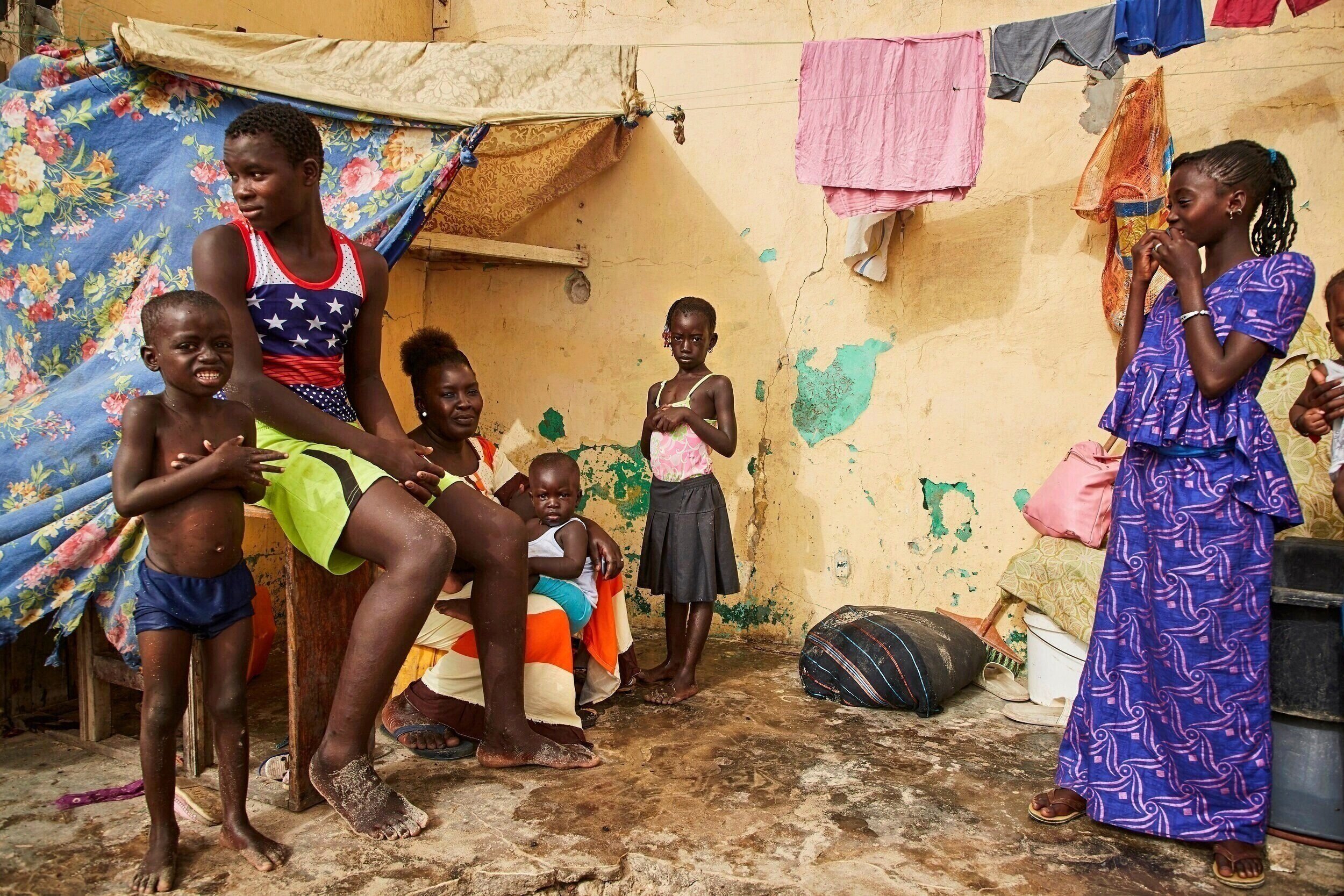
Fatou Ngueye, 34, sits within the last 2 remaining walls of her living room -which is now open to the sand and ocean- with her children. The family has been sleeping on the floor of a neighbor’s home for over a year so that her husband, a fisherman, can remain close to the sea for work.

The remaining shells of sea-facing homes that have been destroyed in Saint-Louis, Senegal

The Senegalese government keeps track of the crumbling houses on the Saint Louis coast with a series of personalized numbers. When the properties finally become so decayed that people can no longer live in them, the families are identified by these tracking codes associated with their former homes. They are then being moved to a tented camp site where they will often live with 3 or 4 other families in a single structure.

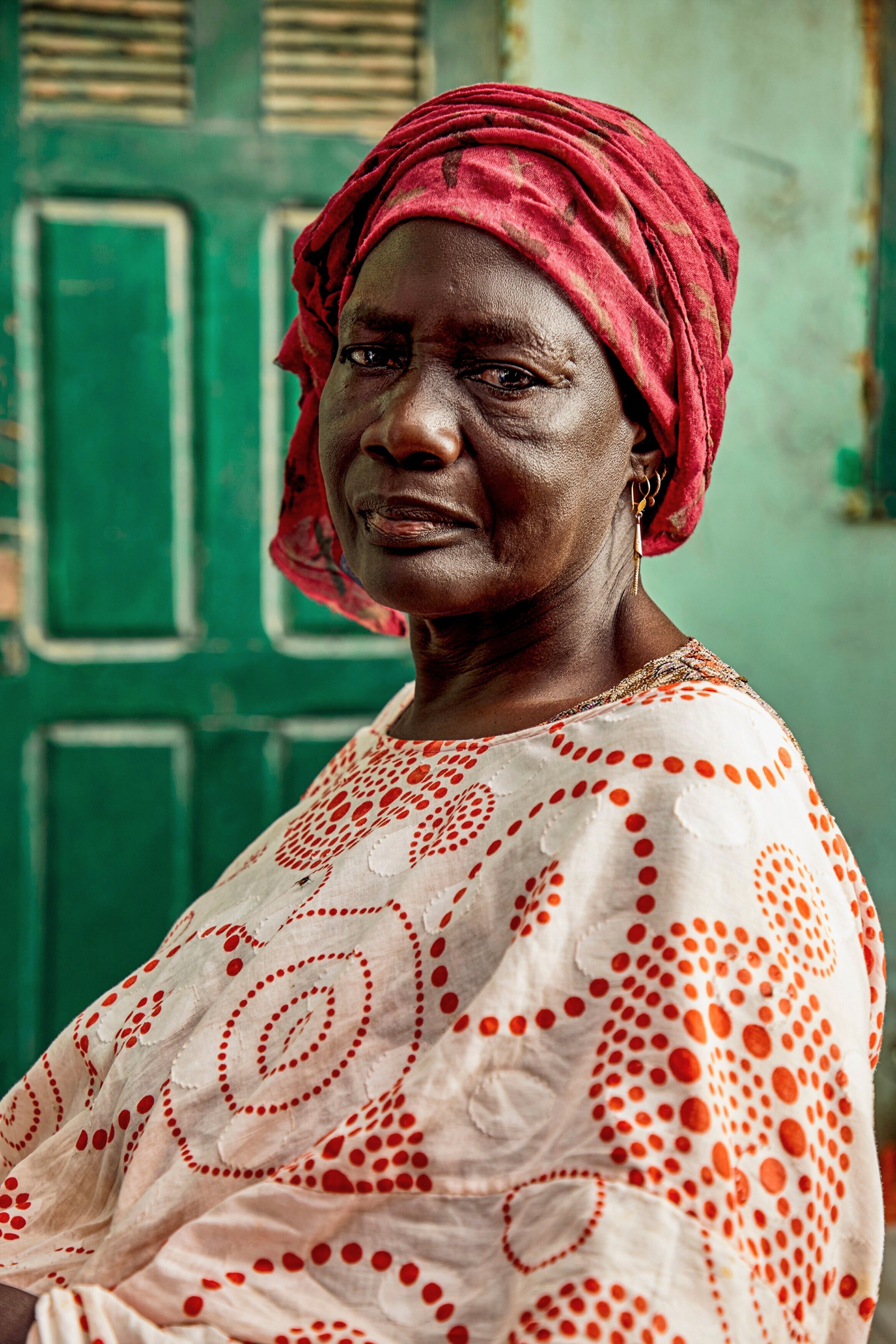
A portrait of Mari Taw, 58 years old, in front of her home, which has been in her family for more than 4 generations. The house, which she shares with her two adult sons and their families, is barely habitable, as the walls and stairway have begun to break apart.
Still, she feels lucky that it’s set back one row from the ocean, so there's hope that they might be able to stay there for another year before they'll have to move to the government's tented camps.
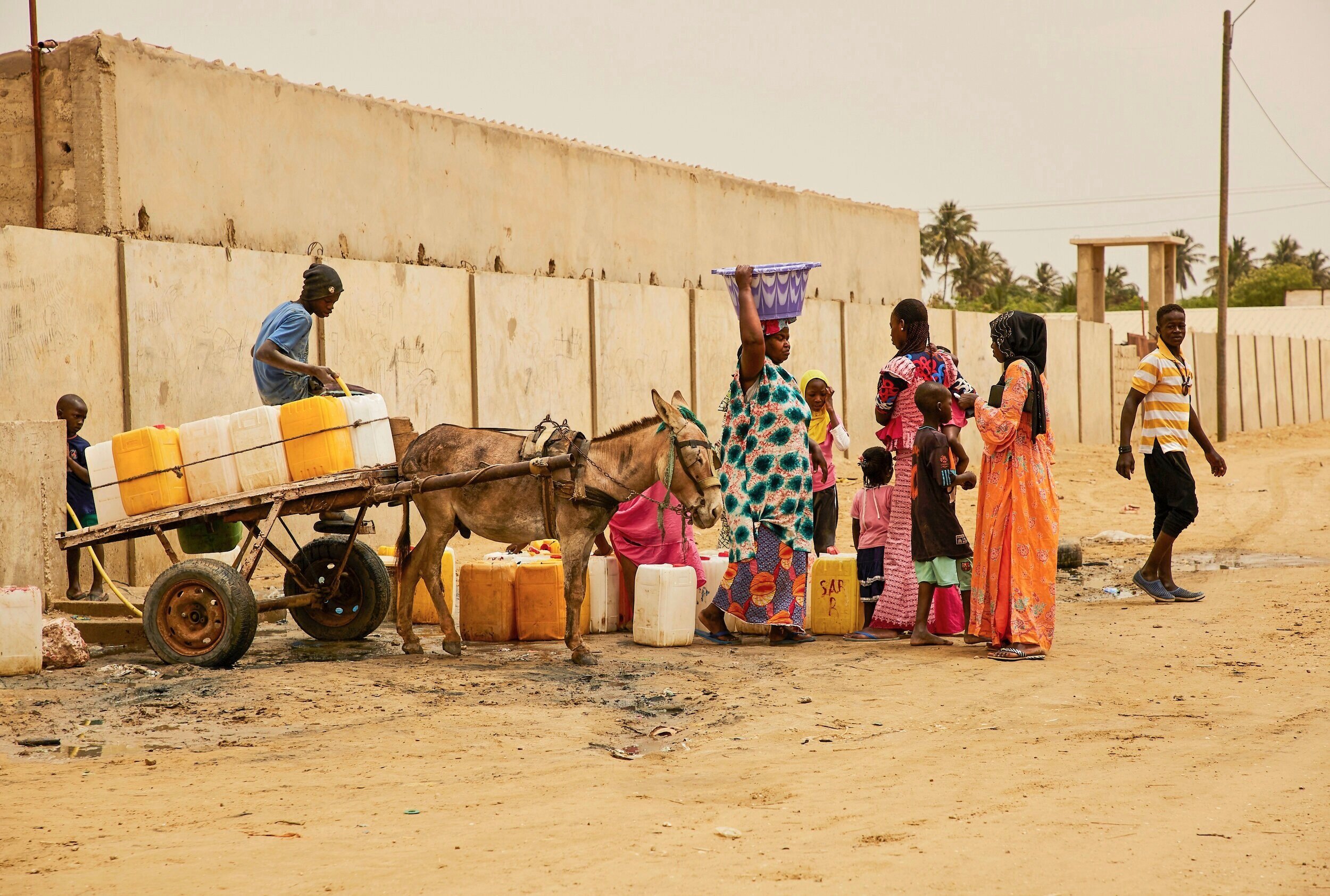
Residents of Khar Yalla camp– the “temporary” site where people whose homes have been destroyed are relocated– queue for water. The arid land at the camp is not connected to sufficient water lines, so people must collect it from a single tapped source for all their washing and cooking needs.

The main floor of a school that’s begun to break apart as the foundations are eroded by the ocean in Saint-Louis, Senegal
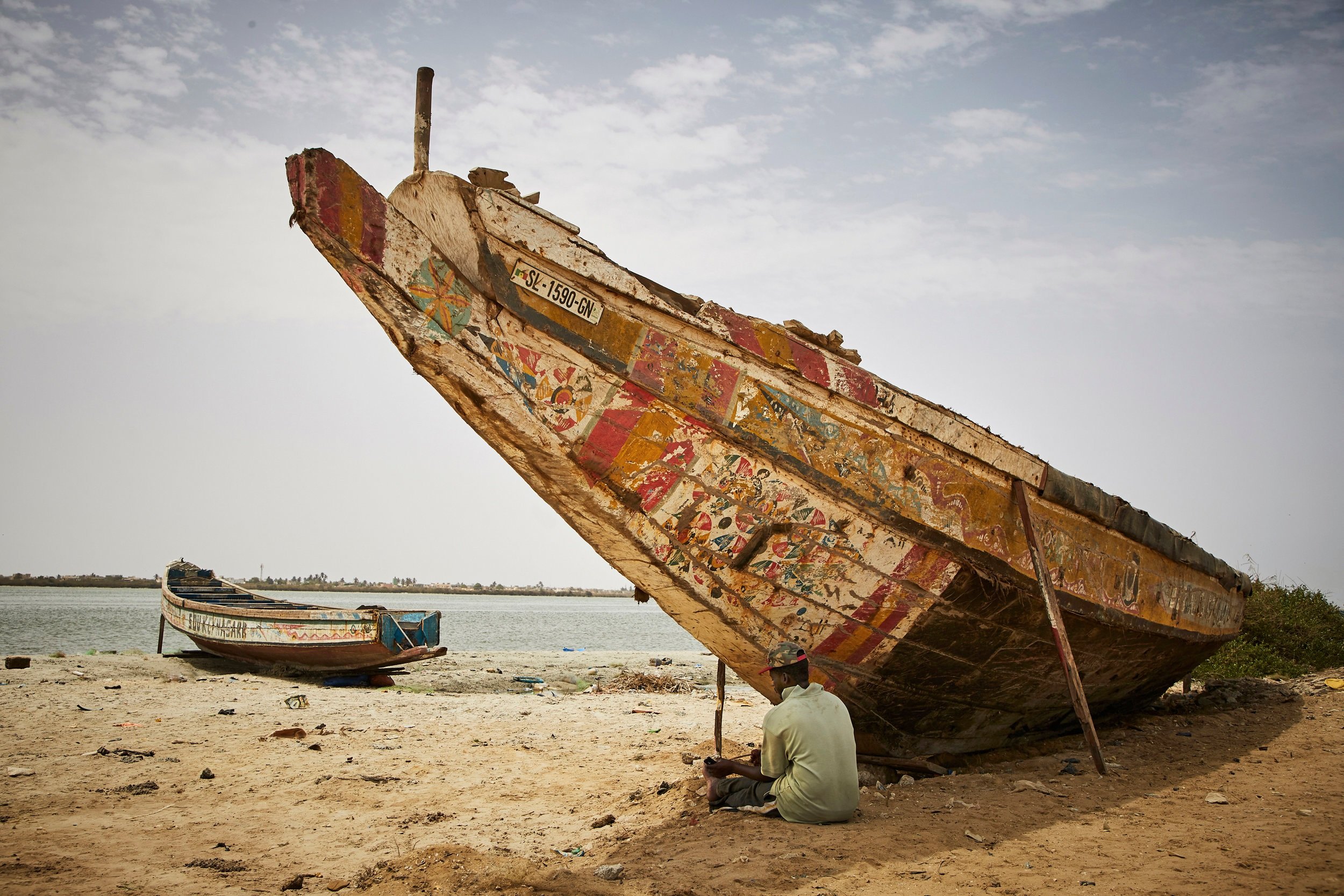
Fisherman, Daoud Diallo, sits under the bow of a boat for shade. He lives in a single room that he shares with 9 other people after his family home became inhabitable due to erosion.
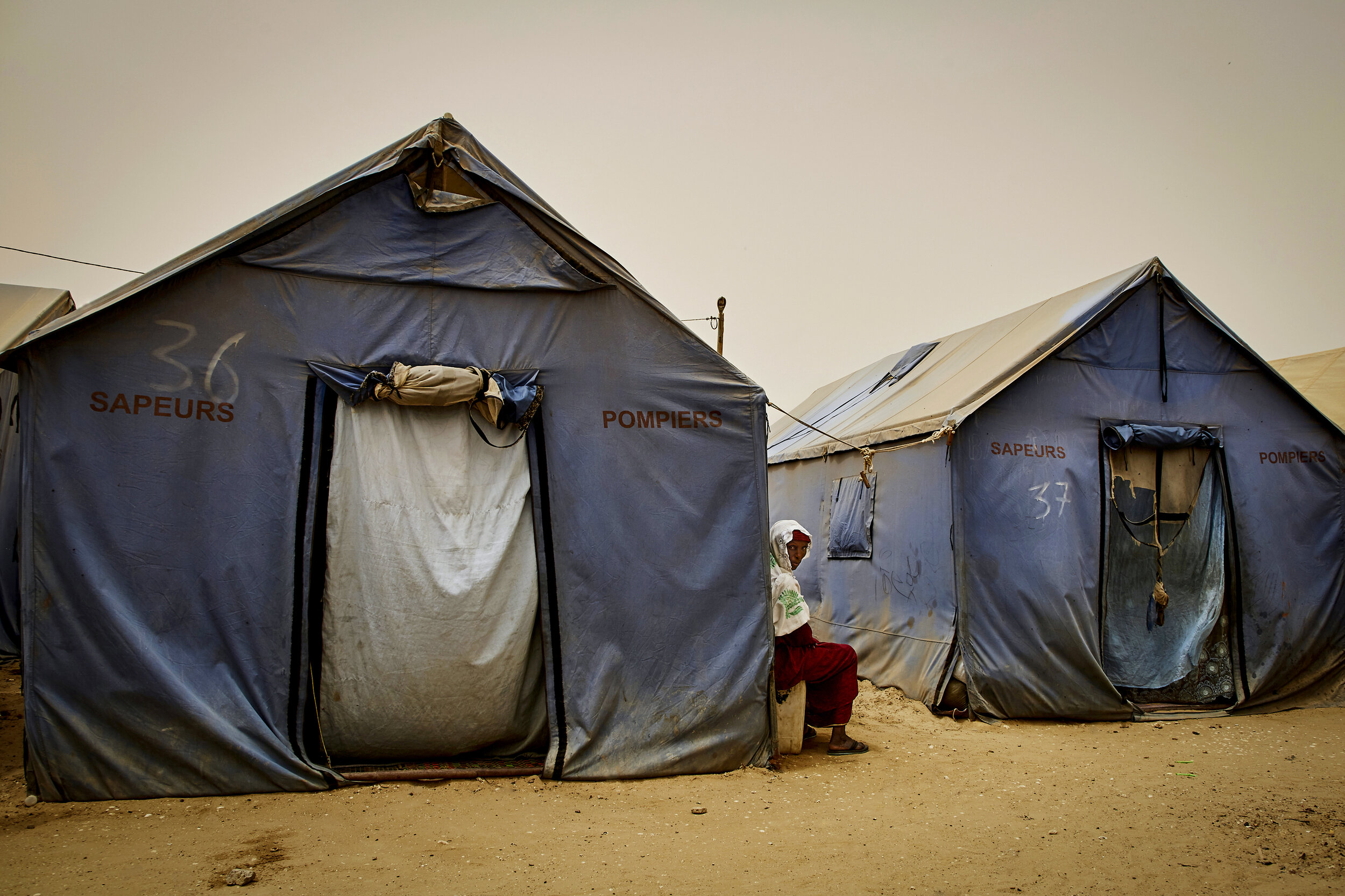
Adama Mbaye, 62, sits between two tents in Khar Yalla Camp. She along with her eldest son and his family were relocated to the camp by the government after they’d lost their home to the sea. Roughly 14 people from 3 separate families live in each tent, which can be hot & stifling during the day.

The local cemetery in Saint Louis has also begun to flood. The majority of people from the region have at least one relative buried here.
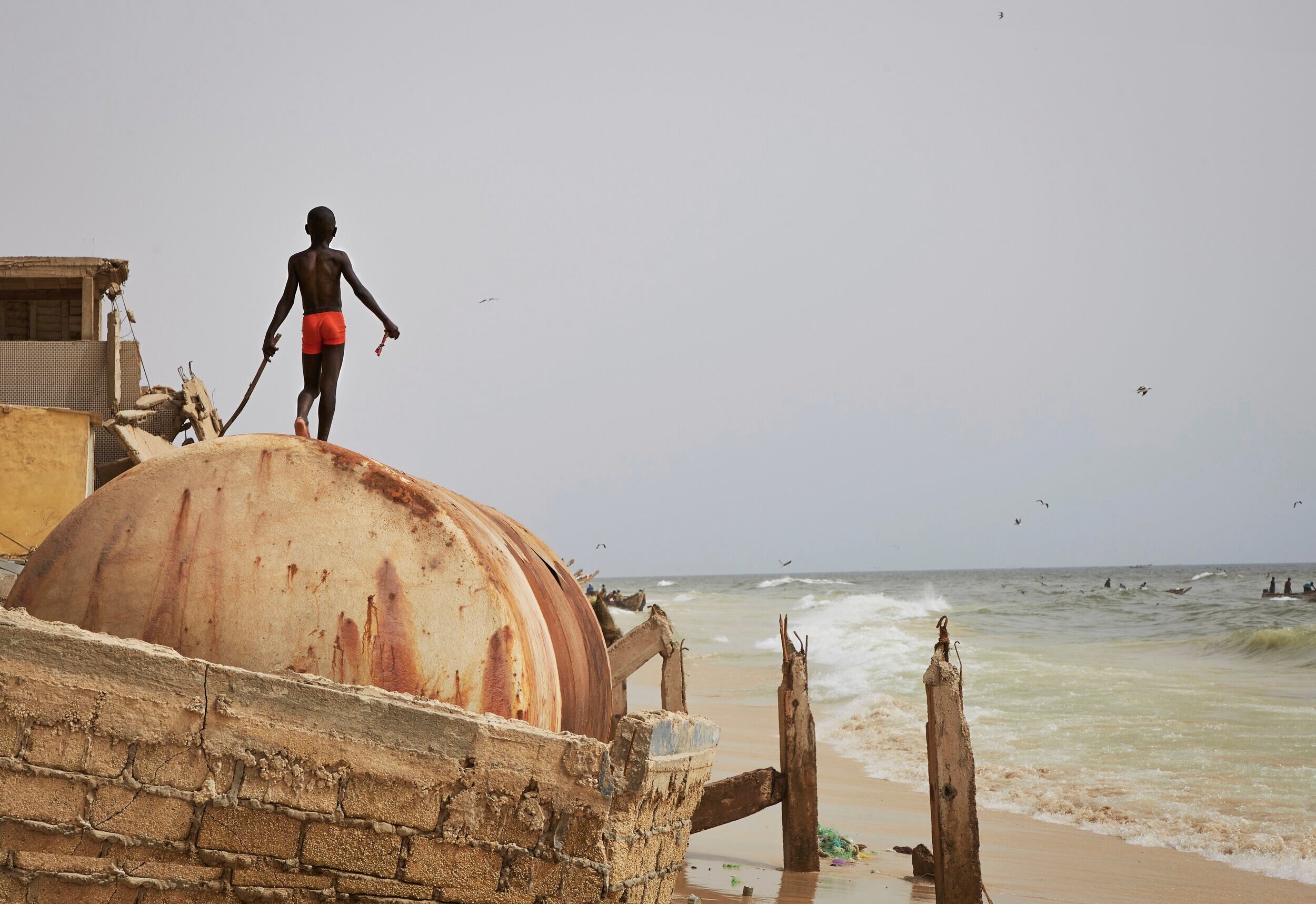
A child plays on the ruins of a sea wall after the ocean surge.
Saint Louis, Senegal

The tree that previously marked the center of the village of Doun Baba Dieye is now covered by water, taken over by cormorant birds.
Doun Baba Dieye was a village of fishermen, farmers and cattle people, south of Saint-Louis. Here- due to the channel that Senegalese authorities dug- the floodwaters swelled to the point that villagers were forced to completely abandon their homes and move inland.












Fatou Ngueye, 34, sits within the last 2 remaining walls of her living room -which is now open to the sand and ocean- with her children. The family has been sleeping on the floor of a neighbor’s home for over a year so that her husband, a fisherman, can remain close to the sea for work.
The remaining shells of sea-facing homes that have been destroyed in Saint-Louis, Senegal
The Senegalese government keeps track of the crumbling houses on the Saint Louis coast with a series of personalized numbers. When the properties finally become so decayed that people can no longer live in them, the families are identified by these tracking codes associated with their former homes. They are then being moved to a tented camp site where they will often live with 3 or 4 other families in a single structure.
A portrait of Mari Taw, 58 years old, in front of her home, which has been in her family for more than 4 generations. The house, which she shares with her two adult sons and their families, is barely habitable, as the walls and stairway have begun to break apart.
Still, she feels lucky that it’s set back one row from the ocean, so there's hope that they might be able to stay there for another year before they'll have to move to the government's tented camps.
Residents of Khar Yalla camp– the “temporary” site where people whose homes have been destroyed are relocated– queue for water. The arid land at the camp is not connected to sufficient water lines, so people must collect it from a single tapped source for all their washing and cooking needs.
The main floor of a school that’s begun to break apart as the foundations are eroded by the ocean in Saint-Louis, Senegal
Fisherman, Daoud Diallo, sits under the bow of a boat for shade. He lives in a single room that he shares with 9 other people after his family home became inhabitable due to erosion.
Adama Mbaye, 62, sits between two tents in Khar Yalla Camp. She along with her eldest son and his family were relocated to the camp by the government after they’d lost their home to the sea. Roughly 14 people from 3 separate families live in each tent, which can be hot & stifling during the day.
The local cemetery in Saint Louis has also begun to flood. The majority of people from the region have at least one relative buried here.
A child plays on the ruins of a sea wall after the ocean surge.
Saint Louis, Senegal
The tree that previously marked the center of the village of Doun Baba Dieye is now covered by water, taken over by cormorant birds.
Doun Baba Dieye was a village of fishermen, farmers and cattle people, south of Saint-Louis. Here- due to the channel that Senegalese authorities dug- the floodwaters swelled to the point that villagers were forced to completely abandon their homes and move inland.
